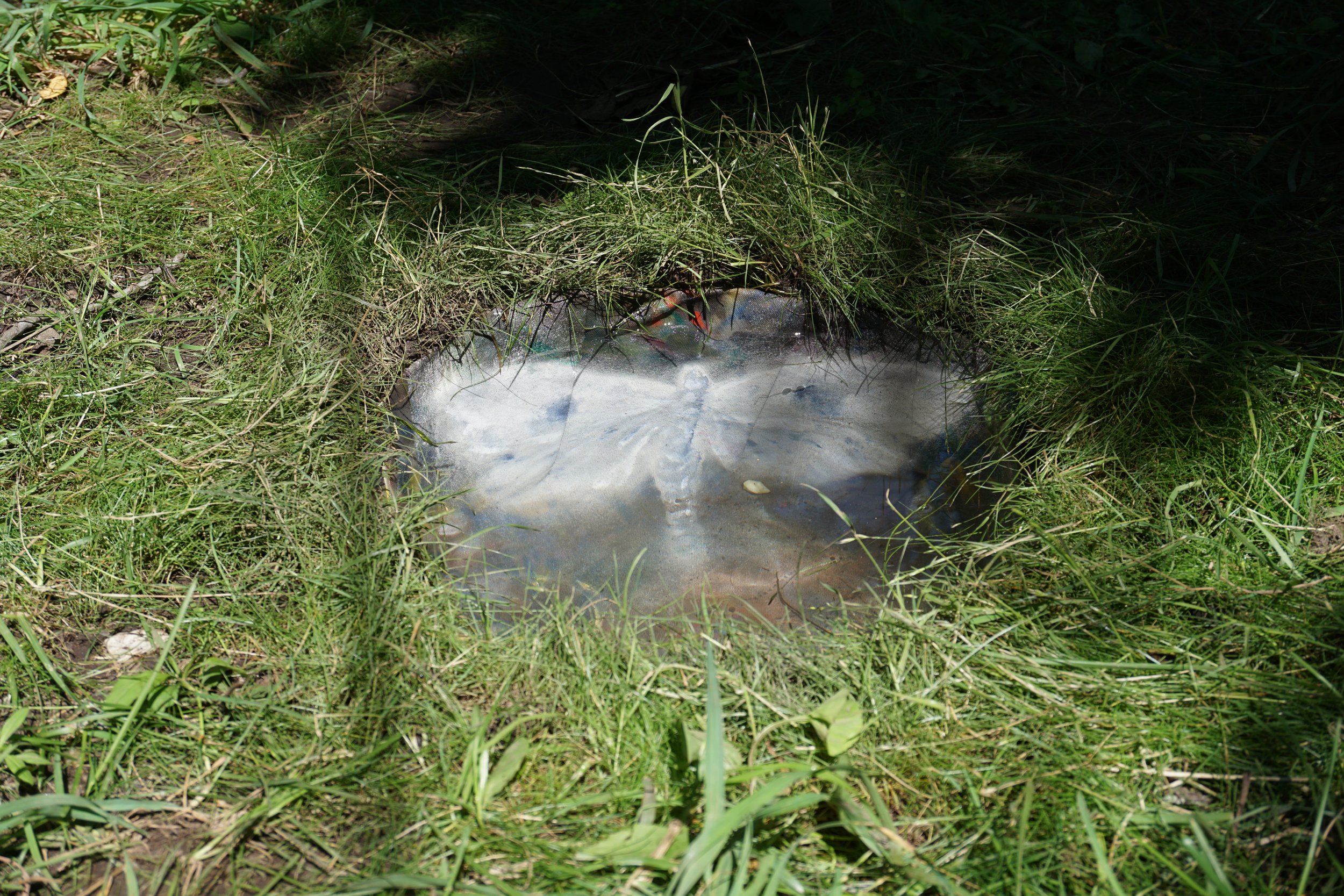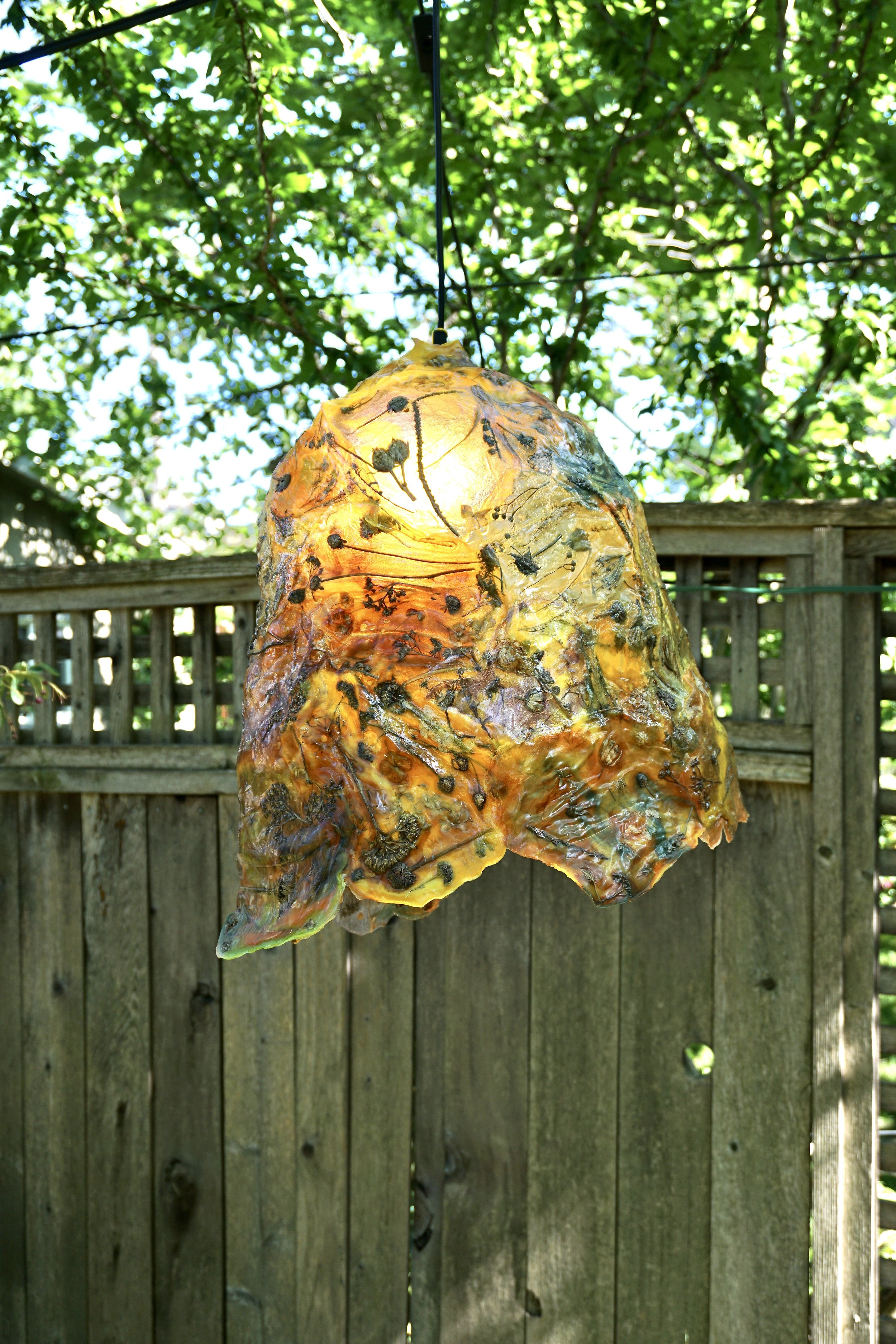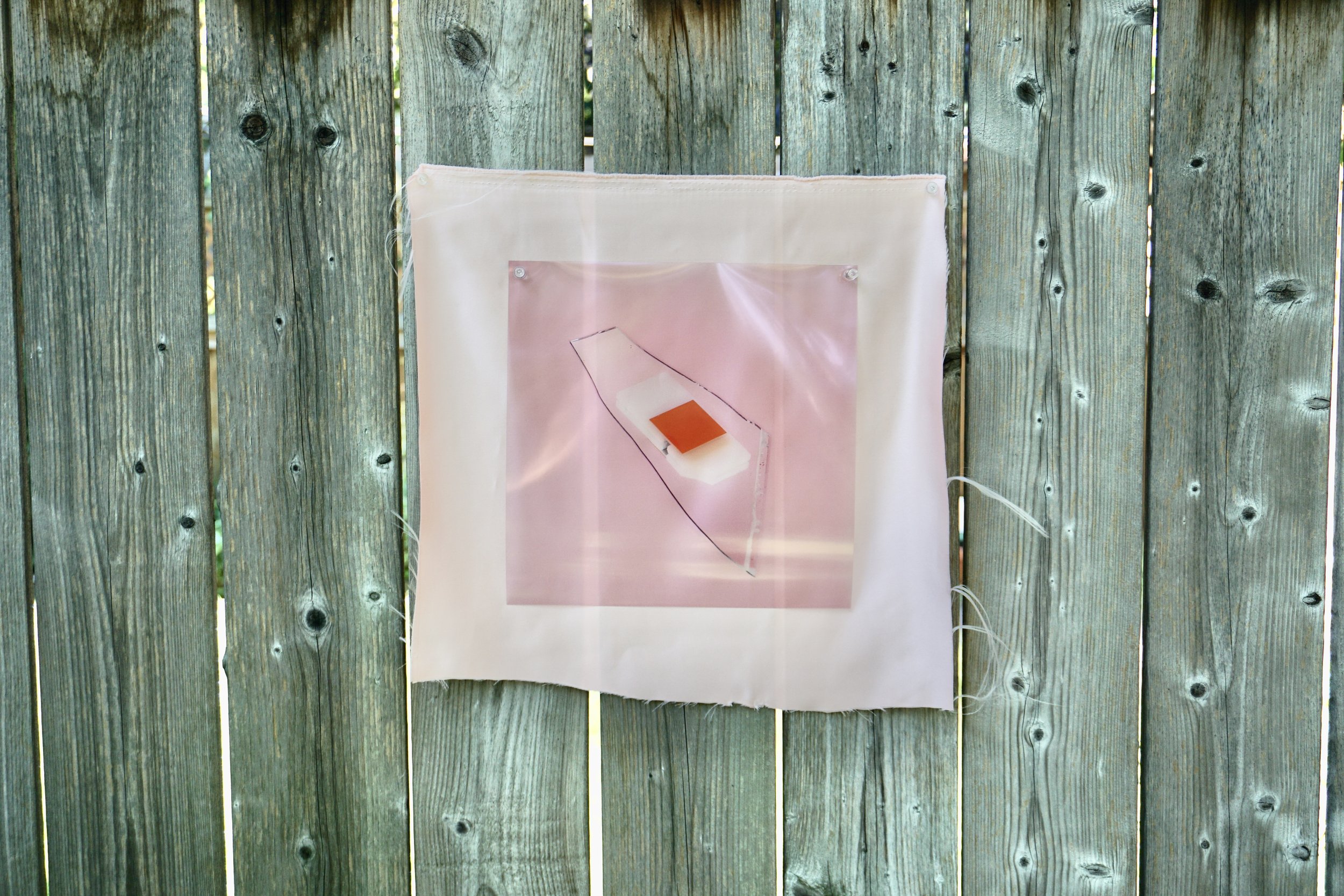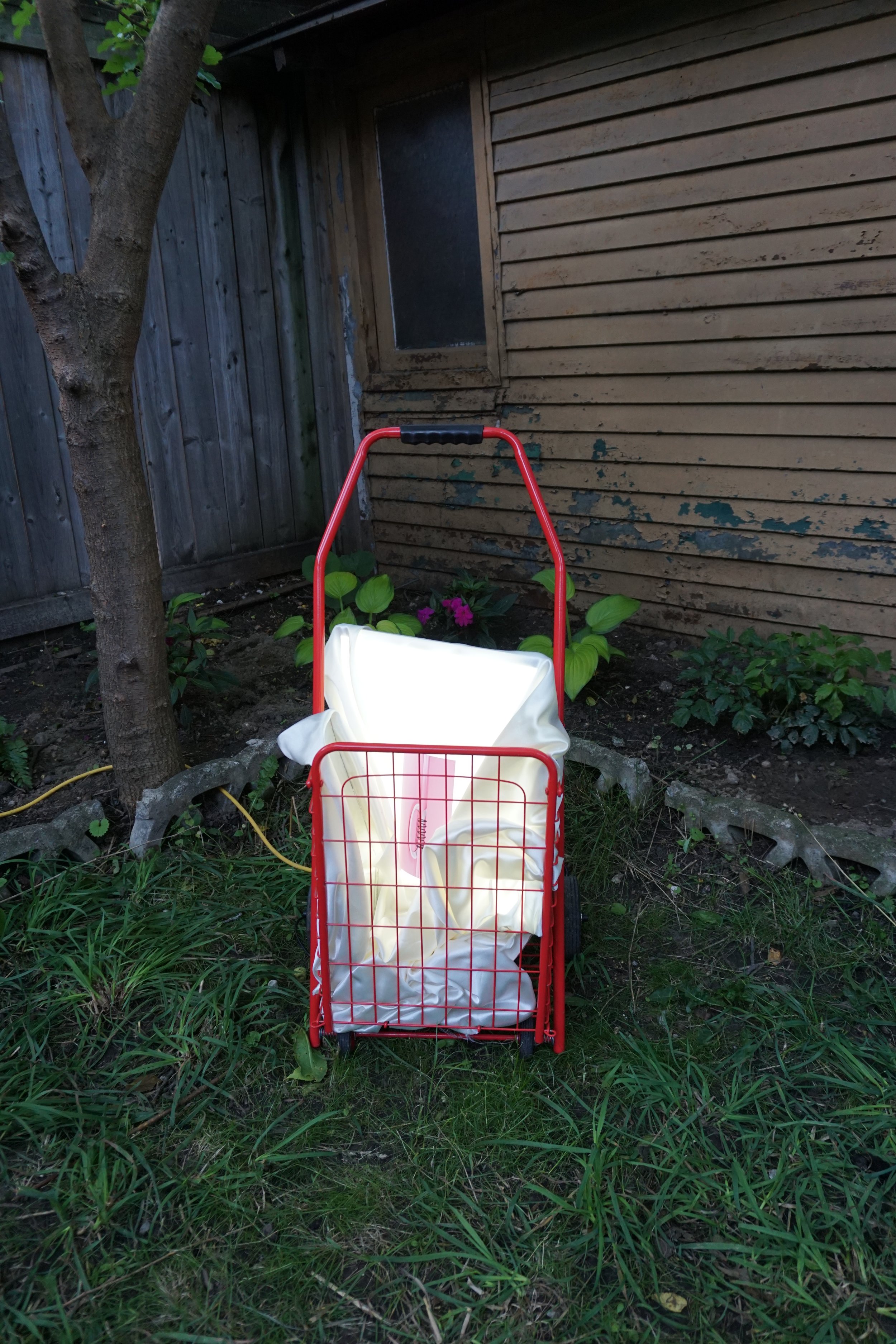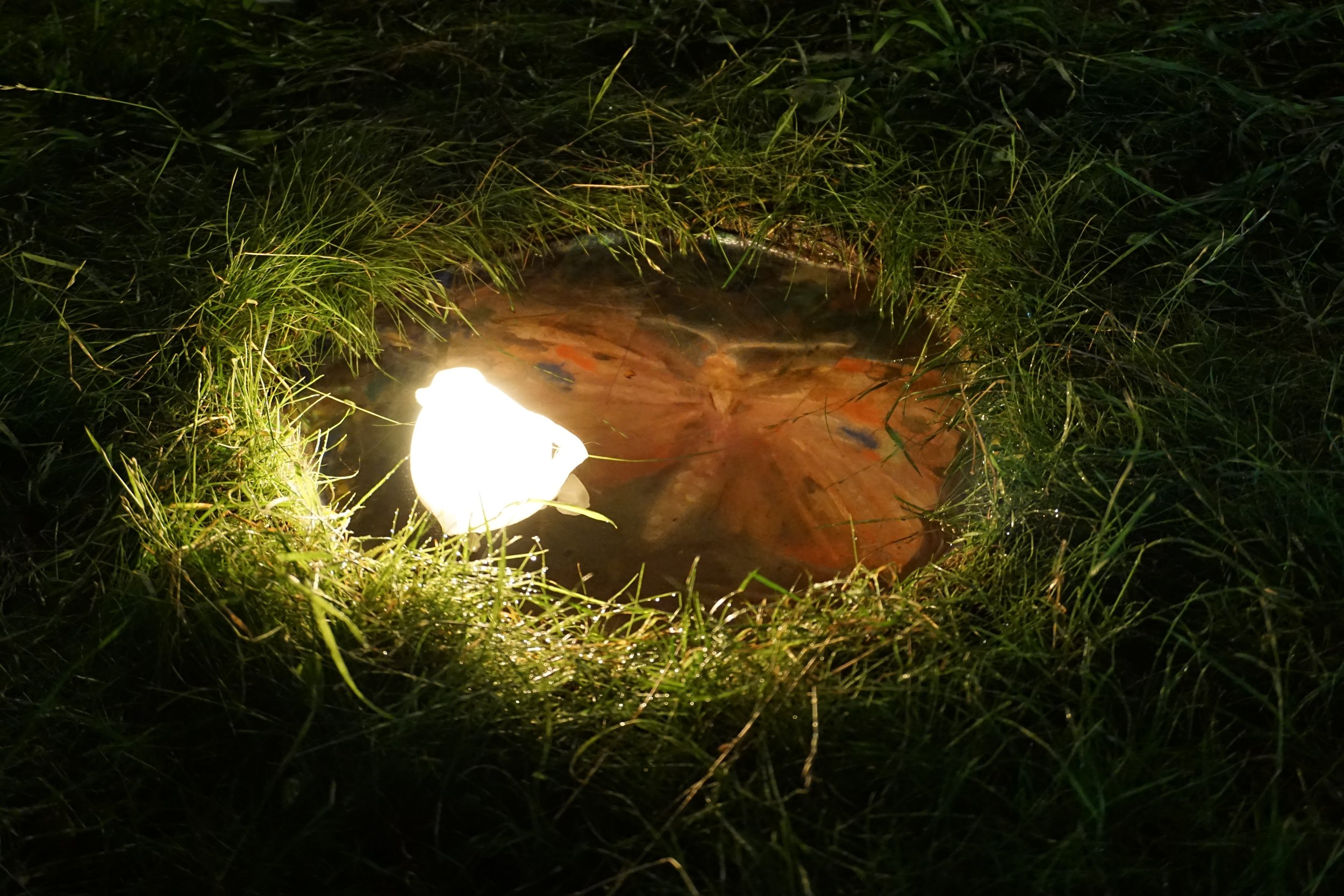Volume I, July 10th, 2021
Shannon Garden-Smith, SK Maston, Alison Postma
In Garden Variety Volume I, Shannon Garden-Smith, SK Maston, and Alison Postma gently probe the relationship between processes bound within the ephemeral and the interminable, where fluidity and openness infect the closed and static, and vice versa. They ask how we might begin to recognize objects and structures as connective tissues that are perennially alive.
Made of food-grade gelatin stained with pigment and embedded with plant clippings that Garden-Smith gathered on many walks that stretched across many seasons, the bones of a mammal or the pith of a stem (shades) I; II are surfaces made mostly of highly processed animal collagen—bones and tendons. The hardened gelatin surfaces that preserve a lacework of dried and pressed plant clippings resemble strange wrinkled glass or acrylic, but unlike these materials, the gelatin surfaces are unstable. Vulnerable to heat and wet, they will decay in the sun and rain over time.
In SK Maston’s waterhold, a hole is dug in the earth in an attempt to illuminate the often-overlooked network of lifeworlds existing simultaneously beneath our feet and alongside contemporary human systems. Maston explores the vantage point of animals such as insects and single-celled organisms to articulate parallel nonhuman lives that are indicative of a distant ancestor’s sense of physicality or distinct rhythm of nature.
In Alison Postma’s Yard Sale, the artist contemplates the relationship between identity formation and object collection, situating these found objects as psychological burdens that trap the individual within the persona of an imagined other.



